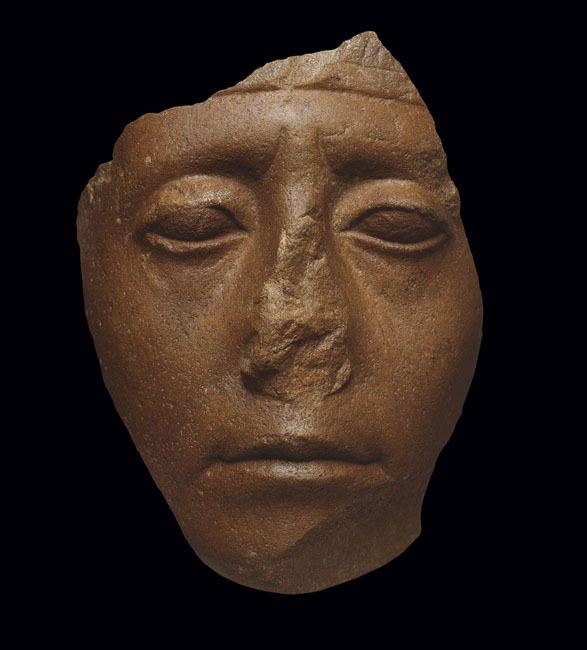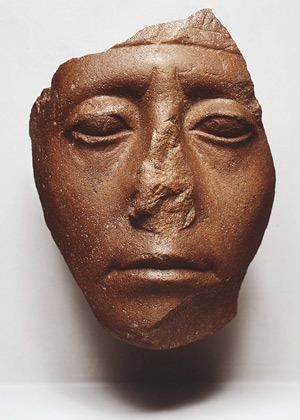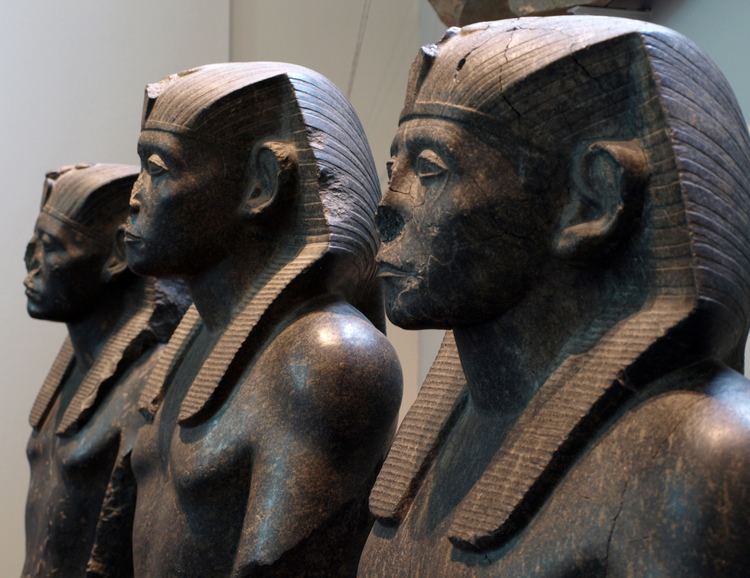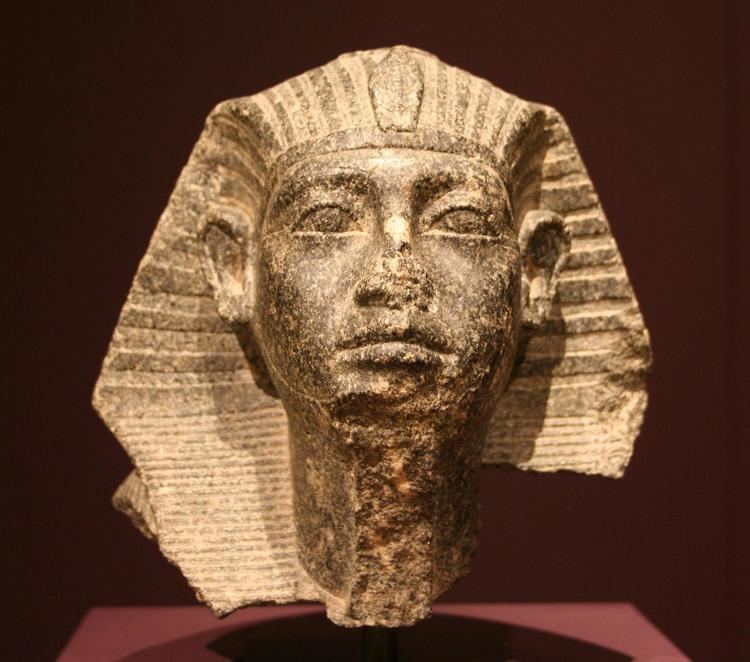Name Senusret III Mother Khnemetneferhedjet I Grandparents Amenemhat II | Children Amenemhat III | |
 | ||
Reign 1878 – 1839 BC (Twelfth Dynasty) Parents Khenemetneferhedjet I, Senusret II Grandchildren Sobekneferu, Amenemhat IV, Neferuptah Similar People Senusret I, Senusret II, Amenemhat III, Amenemhat I, Amenemhat II | ||
Black Ruler founded and built Athens, Greece 2:56 sec
Khakaure Senusret III (also written as Senwosret III or the hellenised form Sesostris III) was a pharaoh of Egypt. He ruled from 1878 BC to 1839 BC during a time of great power and prosperity, and was the fifth monarch of the Twelfth Dynasty of the Middle Kingdom. He was a great pharaoh of the Twelfth Dynasty and is considered to be perhaps the most powerful Egyptian ruler of the dynasty. Consequently, he is regarded as one of the sources for the legend about Sesostris. His military campaigns gave rise to an era of peace and economic prosperity that reduced the power of regional rulers and led to a revival in craftwork, trade and urban development. Senusret III was one of the few kings who were deified and honored with a cult during their own lifetime.
Contents
- Black Ruler founded and built Athens Greece 256 sec
- Pyramid Of Senusret III At Dashur
- Family
- Initiatives
- Length of reign
- Pyramid and complex
- Royal statuary
- Trivia
- References

"Pyramid Of Senusret III" At Dashur
Family

Senusret III was the son of Senusret II and of Khenemetneferhedjet I also called Khenemetneferhedjet I Weret (the elder). Two wives of Senusret III are known for certain. These are Khenemetneferhedjet II and Neferthenut, both mainly known from their burials next to the pyramid of the king at Dahshur. Several daughters are known, although they are also just attested by the burials around the king's pyramid and their exact relation to the king is disputable. These include Sithathor, Menet, Senetsenebtysy and Meret. Amenemhat III was most likely a son of the king. Other sons are not known.
Initiatives

Senusret III cleared a navigable canal through the first cataract (this was different from the Canal of the Pharaohs, which Senusret III also apparently tried to build). He also relentlessly pushed his kingdom's expansion into Nubia (from 1866 to 1863 BC) where he erected massive river forts including Buhen, Semna and Toshka at Uronarti.

He carried out at least four major campaigns into Nubia in his Years 8, 10, 16 and 19. His Year 8 stela at Semna documents his victories against the Nubians through which he is thought to have made safe the southern frontier, preventing further incursions into Egypt. Another great stela from Semna dated to the third month of Year 16 of his reign mentions his military activities against both Nubia and Canaan. In it, he admonished his future successors to maintain the new border which he had created:
His final campaign which was in Year 19 was less successful because the king's forces were caught by the Nile being lower than normal and they had to retreat and abandon their campaign to avoid being trapped in hostile Nubian territory.
Such was his forceful nature and immense influence that Senusret III was worshipped as a god in Semna by later generations. Jacques Morgan, in 1894, found rock inscriptions near Sehel Island documenting his digging of a canal under the king. Senusret III erected a temple and town in Abydos, and another temple in Medamud.
His court included the viziers Sobekemhat, Nebit and Khnumhotep. Ikhernofret worked as treasurer for the king at Abydos. Senankh cleared the canal at Sehel for the king.
Length of reign
A double-dated papyrus in the Berlin Museum shows Year 20 of his reign next to Year 1 of his son Amenemhat III; this is generally assumed to be a proof for a coregency with his son which should have been started in this year. According to Josef W. Wegner, a Year 39 hieratic control note was recovered on a white limestone block from:
Wegner stresses that it is unlikely that Amenemhat III, Senusret's son and successor, would still be working on his father's temple nearly 4 decades into his own reign. He notes that the only possible solution for the block's existence here is that Senusret III had a 39-year reign, with the final 20 years in coregency with his son Amenemhat III. Since the project was associated with a project of Senusret III, his Regnal Year was presumably used to date the block, rather than Year 20 of Amenemhat III. This implies that Senusret was still alive in the first two decades of his son's reign.
Wegner's hypothesis is rejected by some scholars such as Pierre Tallet and Harco Willems; according to them, it is more likely that such a coregency never occurred, and that the Year 39 control note still refers to Amenemhat III who may have ordered some additions to Senusret's monuments.
Pyramid and complex
Senusret's pyramid complex was built north-east of the Red Pyramid of Dashur and in grandeur far surpassed those from the early 12th dynasty in size and underlying religious conceptions.
There has been speculation that Senusret was not necessarily buried there but rather in his sophisticated funerary complex in Abydos with his pyramid more likely to have been a cenotaph.
Senusret's pyramid is 105 meters square and 78 meters high. The total volume was about 288,000 cubic meters. The pyramid was built of a core of mud bricks. They were not made a consistent size implying that standardized moulds weren't used. The burial chamber was lined with granite. Above the vaulted burial chamber was a second relieving chamber that was roofed with 5 pairs of limestone beams each weighing 30 tons. Above this was a third mudbrick vault.
The pyramid complex included a small mortuary temple and 7 smaller pyramids for his queens. There is also an underground gallery with further burials for royal women. Here were found the treasures of Sithathor and queen Mereret. There was also a southern temple, however this has since been destroyed.
Royal statuary
Senusret III is well known for his distinctive statues which are almost immediately recognizable as his. On them, the king is depicted at different ages, and in particular on the aged ones he sports a strikingly somber expression: the eyes are protruding from hollow eyesockets with pouches and lines under them, the mouth and lips have a grimace of bitterness, and the ears are enormous and protruding forwards. In sharp contrast with the even-exaggerated realism of the head and regardless of its age, the rest of the body is idealized as forever young and muscular in a more classical pharaonic fashion.
About the reasons why Senusret III chose to be depicted in this unique way one can only speculate, and scholars have proposed two main and somewhat polarized hypothesis. Some believe that Senusret wanted to be represented as a lonely and disenchanted ruler, human before divine, consumed by worries and by his responsibilities. At the opposite, other scholars suggested that the statues originally would convey the idea of a dreadful tyrant able to see and hear everything under his strict control.
Trivia
Senusret is a major character in Christian Jacq's historical fiction series The Mysteries of Osiris
Many conservative biblical scholars consider Senusret the Pharaoh of Genesis 39-47 who elevated Joseph to a high administrative post answerable directly to him.
